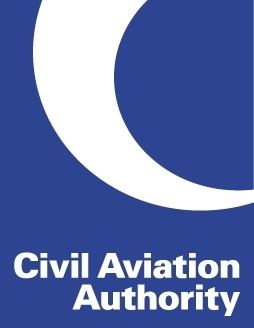Abbreviation CAA Region served United Kingdom Headquarters London, United Kingdom Founded 1972 | Formation 1972 Purpose Aviation regulator CEO Andrew Haines (Aug 2009–) | |
 | ||
Location Gatwick "Main Office"HolbornLondon Borough of Camden Profiles | ||
The Civil Aviation Authority (CAA) is the statutory corporation which oversees and regulates all aspects of civil aviation in the United Kingdom. The CAA head office is located in CAA House on Kingsway in Holborn, London. The CAA Safety Regulation Group is in Aviation House in Gatwick Airport in Crawley, England. The CAA is a public corporation of the Department for Transport.
Contents
- Functions
- Responsibilities
- ATOL
- History
- GA regulation
- CAA Flying Unit
- CAA Signals Training Establishment STE Bletchley Park
- CAA College of Telecommunications Engineering CTE Bletchley
- References
From 1 April 2014, the CAA took over a number of aviation security functions from the Department for Transport. The new Directorate of Aviation Security within the CAA now manages rule-making and compliance to deliver proportionate and focussed regulation for UK aviation to ensure the highest standards of security across the civil aviation sector. The CAA also manages all national security vetting for the aviation industry.
Air Safety Support International, a subsidiary of the CAA, is responsible for air safety in the British Overseas Territories.
Functions
The CAA directly or indirectly regulates all aspects of aviation in the UK. In some aspects of aviation it is the primary regulator, in other areas, where the responsibility for regulation has passed to the European Aviation Safety Agency (EASA), the CAA acts as EASA's local office, implementing the regulations. Representatives from the CAA sit on EASA's advisory bodies, taking part in the Europe-wide regulation process.
The UK government requires that the CAA's costs are met entirely from its charges on those whom it regulates. Unlike many other countries, there is no direct government funding of the CAA's work. It is classed as a public corporation, established by statute, in the public sector. The connection it has with the government is via the Machinery of government and Standards Group of the Cabinet Office.
Responsibilities
The CAA regulates (approximately):
ATOL
The CAA also oversees the Air Travel Organisers' Licensing (ATOL).
By law, every UK travel company which sells air holidays and flights is required to hold an ATOL, which stands for Air Travel Organiser's Licence.
If a travel company with an ATOL ceases trading, the ATOL scheme protects customers who had booked holidays with the firm. It ensures they do not get stranded abroad or lose money.
The scheme is designed to reassure customers that their money is safe, and will provide assistance in the event of a travel company failure.
History
The CAA was established in 1972, under the terms of the Civil Aviation Act 1971, following the recommendations of a government committee chaired by Sir Ronald Edwards. Previously, regulation of aviation was the responsibility of the Air Registration Board. The current main Act of Parliament regulating aviation in the UK is the Civil Aviation Act 1982. Responsibility for air traffic control in the UK passed to NATS in the run-up to the establishment of its public-private partnership in 2001.
GA regulation
In 2013 the CAA announced a new approach to regulating GA which will be more proportionate. A new dedicated GA unit was established in 2014 www.caa.co.uk/ga
CAA Flying Unit
The CAA was also responsible for the calibration of navigation and approach aids until the Flight Calibration Services group was privatised and sold to Flight Precision Ltd in 1996.
The history of the Civil Aviation Flying Unit (CAFU) can be traced back to the Air Ministry's Civil Operations Fleet founded in 1944. The CAA and its predecessors have operated 49 aircraft of 13, primarily British, aircraft types including de Havilland Tiger Moths, Avro Ansons, Airspeed Consuls, Percival Princes, de Havilland Doves, Hawker Siddeley HS 748s and Hawker Siddeley HS 125s.
The roles performed by CAFU aircraft included:
Beyond the privatisation of the calibration service in 1996, the Civil Aviation Authority operated two HS 125-700 aircraft successively up until 2002, providing conversion and continuation flying for professional CAA pilots, conducting radar trials for National Air Traffic Services (NATS) and serving the CAA, NATS and Highlands & Islands Airports Ltd (HIAL) in the communications role.
Previous to the privatisation, Stansted Airport had been the home of Flight Calibration; however, in 1996 the department was moved to Teesside Airport in the North East of England with the photographic laboratory services contracted out to a local company, HighLight Photographics.
CAA Signals Training Establishment (STE) – Bletchley Park
Based mainly in 'A', 'B' and 'E' Blocks and with further Navigation Aid and Radar classrooms on the northwest corner of the park (now occupied by housing), the STE trained technicians to maintain airport and en-route telecommunications and navigational aids for UK airport and en-route services, including telecommunications, navigational aids and radar.
A two-to-three-year locally domiciled apprenticeship trained technicians who were then posted to airports or en-route centres for on-going employment. STE also provided training facilities for existing technicians to keep up to date with technological developments or to enhance their skills on a broader range of equipments.
Apprentices had exclusive use of the 'AT Club' (an imaginative contraction of the 'Apprentice Technicians Club') and also to the Bletchley Park 'Radio Shack' with a call-sign of 'G4BWD' – 'Golf Four Building Works Department', able to access the 2-metre band.
In 1974, STE developed a newer training course, reducing training to a one-to-two-year period for higher-qualified ('A'-level and beyond) entrants, nicknamed 'Super-ATs' (or "super-rats"), by some, but 'Super-Techs' (often with a sneer) by others.
CAA College of Telecommunications Engineering (CTE) – Bletchley
In 1975/1976, the 'Signals Training Establishment' was renamed the 'College of Telecommunications Engineering', with 'Apprentice Technicians' being re-badged as 'Engineer Cadets', no longer passing out as 'Radio Technicians' but as 'Air Traffic Engineers'.
